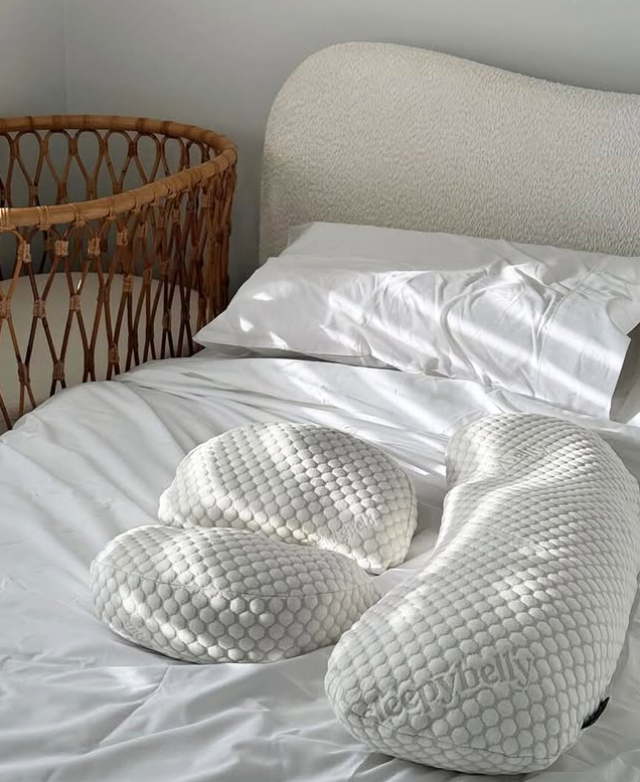Pillow-Supported Positions for Pelvic Floor Downtraining and Deeper Breathing
Pregnancy can leave your body feeling tense and your mind racing, especially after a busy day. Taking just 10 minutes each evening to unwind with gentle, pillow-supported positions can help relax your pelvic floor muscles and encourage deeper, more restorative breathing. This simple routine not only promotes physical comfort but also supports mental calmness, preparing you for a restful night’s sleep.
In this guide, we’ll explore effective pillow-supported positions designed to aid pelvic floor downtraining and enhance breathing to help you understand the benefits and techniques.

Why Focus on Pelvic Floor Downtraining and Deep Breathing?
During pregnancy, your pelvic floor muscles work hard to support your growing baby and prepare for birth. However, tension or overactivity in these muscles can lead to discomfort, urinary issues, or difficulty relaxing postpartum. Pelvic floor downtraining involves consciously relaxing and lengthening these muscles, which can improve comfort and function.
Deep, diaphragmatic breathing complements this by reducing stress, improving oxygen flow, and encouraging relaxation throughout your body. According to the Australian Physiotherapy Association, combining pelvic floor relaxation with mindful breathing is a powerful way to support your body during pregnancy.
Preparing Your Space: Using Pillows for Support
Before you begin your 10-minute evening unwind, gather a few pillows or cushions to create a comfortable and supportive environment. A pregnancy pillow like our Sleepybelly Pregnancy Pillow is ideal because it offers adjustable support for your belly, back, and hips, helping you maintain comfortable positions. Here are five effective pillow-supported positions to help with pelvic floor downtraining and deeper breathing:
1. Supported Side-Lying Position
-
How to Do It:
Lie on your side with a pillow between your knees to keep your hips aligned. Use a pillow to support your belly and another behind your back for stability. -
Benefits:
This position gently lengthens the pelvic floor muscles and reduces pressure on your lower back. It also encourages diaphragmatic breathing by opening up your ribcage. -
Breathing Tip:
Place one hand on your belly and the other on your ribs. Breathe deeply through your nose, feeling your belly rise and fall with each breath. -
Resource:
For more on side-lying benefits during pregnancy, see the Raising Children Network’s guide on pregnancy sleep positions.
2. Reclined Supported Position
-
How to Do It:
Sit against a wall or headboard with pillows supporting your lower back and behind your head. Keep your feet flat on the floor or supported by a cushion. -
Benefits:
This upright position helps open the chest and encourages full, deep breaths. It also allows your pelvic floor to relax naturally without added pressure. -
Breathing Tip:
Focus on slow, controlled breaths, inhaling for a count of four and exhaling for a count of six to promote relaxation. -
Resource:
The Australian Physiotherapy Association highlights the importance of posture and breathing exercises during pregnancy.

3. Pelvic Floor Release with Forward Lean
-
How to Do It:
Kneel on the floor or bed with a pillow under your chest and arms for support. Let your belly hang naturally between your knees. -
Benefits:
This position encourages the pelvic floor to lengthen and release tension. It also helps decompress the lower back. -
Breathing Tip:
Breathe deeply into your lower belly, imagining your pelvic floor muscles softening and releasing with each exhale. -
Resource:
For pelvic floor exercises and relaxation techniques, visit Women’s Health Queensland’s pelvic floor resources.
4. Supported Reclining Twist
-
How to Do It:
Lie on your back with your knees bent and feet flat on the floor. Place a pillow under one knee and gently twist your lower body to one side, using another pillow to support your upper back and shoulders. -
Benefits:
This gentle twist helps release tension in the lower back and pelvic area while promoting relaxation. The support prevents strain and encourages safe spinal alignment. -
Breathing Tip:
Inhale deeply, feeling your ribs expand, and exhale slowly, allowing your body to soften into the twist.
5. Elevated Legs with Pelvic Support
-
How to Do It:
Lie on your back or side with pillows elevating your legs above heart level. Use an additional pillow under your lower back or hips for extra pelvic support. -
Benefits:
Elevating your legs helps reduce swelling and improves circulation, while pelvic support encourages relaxation of the pelvic floor muscles. -
Breathing Tip:
Focus on slow, rhythmic breathing, imagining tension draining away from your pelvis and legs with each exhale.

Additional Tips for Your Evening Unwind
-
Consistency is Key:
Practising these positions for 10 minutes each evening can build lasting relaxation habits. -
Stay Mindful:
Focus on the sensations in your body and your breath to deepen the calming effect. -
Seek Professional Guidance:
If you experience pelvic pain or discomfort, consult a women’s health physiotherapist. The Australian Physiotherapy Association offers resources to find qualified specialists.
Supporting Your Comfort with Sleepybelly
Using supportive maternity products can enhance your relaxation routine. Sleepybelly’s Pregnancy Pillow is designed to adapt to your body’s changing needs, providing comfort and support during your evening unwind and beyond.
Final Thoughts
Taking just 10 minutes each evening to unwind with pillow-supported positions focused on pelvic floor downtraining and deeper breathing can make a significant difference in your pregnancy comfort and sleep quality.
Prioritise this gentle self-care ritual to nurture both your body and mind as you prepare for the exciting journey ahead.



